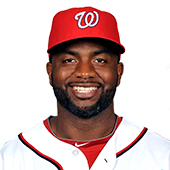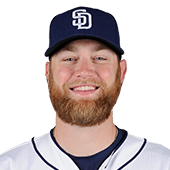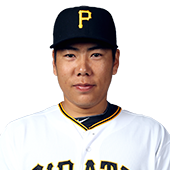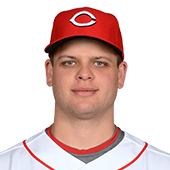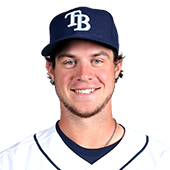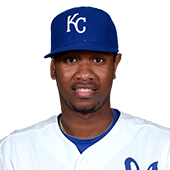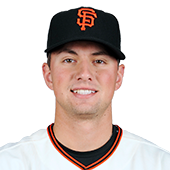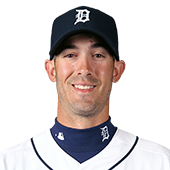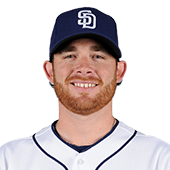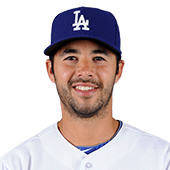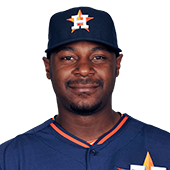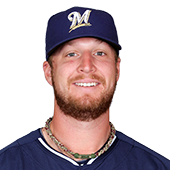2016 Fantasy Baseball Draft Prep: Sleepers – CBSSports.com
Sleepers are so much more fun than busts. They’re more beneficial too. Sure, you can be right on a bust and avoid him, but you still have to pick a good player in his place. Nailing a couple of sleepers late in the draft can win you a league, and provides satisfaction throughout the year.
We often discuss what makes a sleeper and what makes a breakout, and here is how I’ve decided to separate them. Denard Span (who has been great in points leagues before) is a sleeper. Gregory Polanco is a breakout. We’ll get to Polanco in a later article, but let’s start our sleeper discussion with Span.
Denard Span is heading to San Francisco after an injury riddled 2015 likely cost him a lot of money. Coming into 2015 Span had grown into a reliable contributor in average, steals and runs. His steals took a big hit last year, but only because of injury (he wasn’t caught once in 11 attempts).
At 32 years old there is certainly more injury risk, but Span’s ADP (21st round) makes it easy to accept that risk. If you’re wondering what a healthy Span looks like, his 150-game average over the past three seasons is around 85 runs, 25 steals with a .345 OBP.
That OBP is what makes Span such an elite points league option. As Scott White has said multiple times this spring, Span was actually better than J.D. Martinez in points leagues on a per at-bat basis last season. I wouldn’t expect that to continue, but he does make a solid third outfielder who can be drafted towards the end of drafts.
If you only look at ERA, it sure looks like Cashner collapsed last season after a spectacular two-year run of near ace level production. Of course, that isn’t exactly the case. Cashner’s FIP was only a half run higher than his 2013 mark when he had a 3.09 ERA. The main problem? Like every other pitcher in San Diego, it’s kind of weird.
Cashner walked a career high 3.2 batters per nine innings and gave up more home runs (19) than he ever had. This was a common theme in San Diego as both James Shields and Tyson Ross set career highs for BB/9 while Shields and Ian Kennedy (more on him later) led the majors in HR/FB rate. In other words, some really weird things happened in San Diego last year.
The one positive for Cashner was that he set a career high in K/9. If Cashner can maintain that strikeout rate while his strand rate and BABIP normalize, he’ll become an even better version of the pitcher he was in 2014. Even if that strikeout rate slips, he’ll be much better than his current ADP (22nd round).
Since Kang has only been in the league for one year, I would understand if you considered him more of a breakout. The thing is, he already broke out. Kang’s .461 SLG was second only to Kris Bryant among rookies with at least 450 plate appearances. Of course, the difference was that Kang didn’t strike out 30 percent of the time like Bryant.
I keep checking to see if Kang’s injury status has taken a turn for the worse, because that’s the only thing that would explain his 14th round ADP. This is a player who could legitimately threaten the top three of the SS rankings once he’s healthy, and that should be no later than early May. That type of production is worth a ninth-round pick and it will feel like a steal once he’s playing.
If people are sleeping on Kang because of injury concerns, they’ve flat out forgotten about Mesoraco. The 27-year-old catcher missed most of 2015 with a hip injury and is being drafted in the 16th round despite being one of the only active catchers with a 25 home run season under his belt.
Mesoraco, like Denard Span, is absolutely an enhanced injury risk, but his upside and ADP mean he’s absolutely worth it. If he gets even 450 plate appearances, he figures to be one the best sources of power at the catcher position.
We’ve officially arrived at the post-hype sleeper section of this article. The 2013 Rookie of the Year is now with his third organization and battled wrist problems for much of 2015. I guess that partially explains his 21st round ADP, but it doesn’t make it right.
Myers is still just 25 years old and still profiles as a hitter who could hit 20 home runs and score 100 runs at the top of the Padres order. I still think it’s weird that they would hit him there, but if that continues and Myers stays healthy, he’ll be a late-round steal.
Ventura had a tumultuous sophomore campaign that was marred by brawls and a faux demotion. It ended with a World Series victory, but Ventura wasn’t exactly good in the playoffs, surrendering 15 runs in 21 innings. So how can anyone still believe in Ventura? It’s what he did in between the brawling and the postseason.
Over his final 11 starts in 2015, Ventura struck out 81 batters in 68 innings with a 2.38 ERA. Sure, arbitrary end points and all, but if you look at Ventura’s 2015 peripherals, you see a pitcher who struck out more batters, walked less and had a FIP that was almost identical to 2014. If he figures out how to improve the strand rate (and he’s still not even 25 years old), he could finally become the borderline ace we all thought he could be.
When you just look at Panik’s rate stats as a 24-year-old second baseman, it’s hard to figure why he isn’t being touted by everyone in the industry. The problem is that in Roto leagues he’s unlikely to contribute much in HR or RBI and there are questions whether he can repeat last year’s .330 BABIP. Those questions aren’t enough to keep Panik from being a top ten 2B in points leagues, where his walks and double power really pay off.
Porcello is being largely overlooked due to a 4.92 ERA in 2015 that wasn’t entirely his fault. His BABIP against, HR/FB rate and strand rate were all unfavorable, even for a pitcher who has struggled with two of those three in the past. Al Melchior points to Porcello’s sinker trend as a reason he believes in the pitcher’s hot finish to 2015, and it is encouraging. If Porcello can keep that K rate up and his peripherals normalize, he’ll be a fine middle of the rotation option who’s being overlooked in many drafts.
Let’s forget about all the wonkiness at Petco last year, because Kennedy has escaped it. He’ll pitch his home games at Kauffman Stadium, which is now a much better park for fly ball pitchers than Kennedy’s former home. Maybe more importantly, Kennedy will go from pitching in front of one of the worst outfield defenses in baseball to arguably one of the best. He’s always had good K numbers, so a better park and defense could lead to his best season since 2011.
Ethier still crushes right hand pitching, which should leave him on the right side of platoons and make him an excellent value in Roto leagues. He is especially valuable in OBP leagues as he can be a source of both power and on base skills towards the very end of the draft.
Carter couldn’t have asked for a better landing spot. He’s an all-or-nothing HR hitter in the best HR park in baseball on a team that is devoid of talent to replace him. He’ll kill you in batting average, but as a utility in a deep Roto league, he has 35-HR potential in the middle of the Brewers offense.
Here’s a list of the active relievers with more K/9 than Will Smith over the past three seasons:
Aroldis Chapman
Andrew Miller
Dellin Betances
Kenley Jansen
Craig Kimbrel
It’s not easy to be an elite closer on a team as bad as the Brewers will be, but striking out more than 12 batters per nine innings is an excellent place to start.

